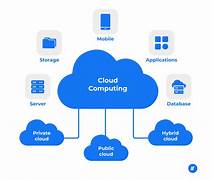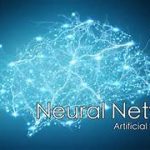The Borderline Between Hardware and Software in Cloud Computing
Introduction
Cloud computing has revolutionized the way businesses and individuals access computing resources. It offers seamless integration of hardware and software, blurring the traditional distinctions between them. While hardware forms the foundation, software orchestrates its functionality, making cloud services accessible and scalable. This article explores the borderline between hardware and software in cloud computing, examining their interplay and how emerging technologies continue to reshape their roles.
1. Understanding Cloud Computing
Cloud computing refers to the delivery of computing services—including servers, storage, databases, networking, software, and analytics—over the internet. Unlike traditional computing, where hardware and software are managed on-premises, cloud computing centralizes these resources in remote data centers.
Key Characteristics of Cloud Computing:
- On-Demand Service: Users can access computing resources as needed without physical intervention.
- Scalability: The cloud dynamically allocates resources based on demand.
- Resource Pooling: Computing power, storage, and applications are shared across multiple users.
- Measured Service: Users pay only for what they use.
2. The Role of Hardware in Cloud Computing
Even though cloud computing is software-driven, it still relies on physical infrastructure. Hardware components play a crucial role in delivering the computing power necessary for cloud operations.
Key Hardware Components:
- Data Centers: These are massive server farms that host cloud resources.
- Servers: Physical machines that store and process data.
- Storage Devices: Solid-state drives (SSDs) and hard disk drives (HDDs) manage cloud storage needs.
- Networking Equipment: Routers, switches, and firewalls ensure seamless data transmission.
- Processing Units: Central Processing Units (CPUs) and Graphics Processing Units (GPUs) power cloud applications.
While users rarely interact directly with cloud hardware, it forms the backbone of every cloud service, from web hosting to artificial intelligence (AI) applications.
3. The Role of Software in Cloud Computing
Software abstracts and optimizes the underlying hardware, making cloud computing user-friendly and efficient.
Key Software Components:
- Virtualization Software: Hypervisors such as VMware and Microsoft Hyper-V allow multiple virtual machines (VMs) to run on a single physical server.
- Cloud Management Platforms: These include Amazon Web Services (AWS), Microsoft Azure, and Google Cloud Platform (GCP), which provide user interfaces and automation tools.
- Middleware: Software that connects different cloud services and applications.
- Operating Systems: Cloud servers run Linux, Windows Server, or other OSs to manage resources efficiently.
- Security Software: Encryption, firewalls, and authentication tools ensure data protection.
4. Where Hardware and Software Intersect in the Cloud
The distinction between hardware and software in cloud computing is becoming increasingly blurred due to technological advancements.
Key Areas of Overlap:
- Virtual Machines (VMs): Virtualization allows multiple software-based environments to run on a single piece of hardware.
- Containers: Technologies like Docker and Kubernetes further abstract hardware resources, making software deployment faster and more efficient.
- Edge Computing: Combines local hardware with cloud-based software to process data closer to its source, reducing latency.
- Software-Defined Networking (SDN): Uses software to manage and automate network hardware functions.
5. The Impact of Emerging Technologies
New advancements are further redefining the borderline between hardware and software in cloud computing.
- AI and Machine Learning: AI-driven cloud services optimize resource allocation and automate decision-making.
- Serverless Computing: Users deploy applications without managing hardware or virtual machines.
- Quantum Computing: Emerging cloud-based quantum processors require a rethinking of traditional hardware-software interactions.
Conclusion
The borderline between hardware and software in cloud computing is continuously evolving. While hardware remains the foundation, software increasingly abstracts and automates its functions, making cloud computing more efficient and accessible. As technology advances, the distinction between the two will become even less apparent, paving the way for more integrated and seamless cloud experiences.


